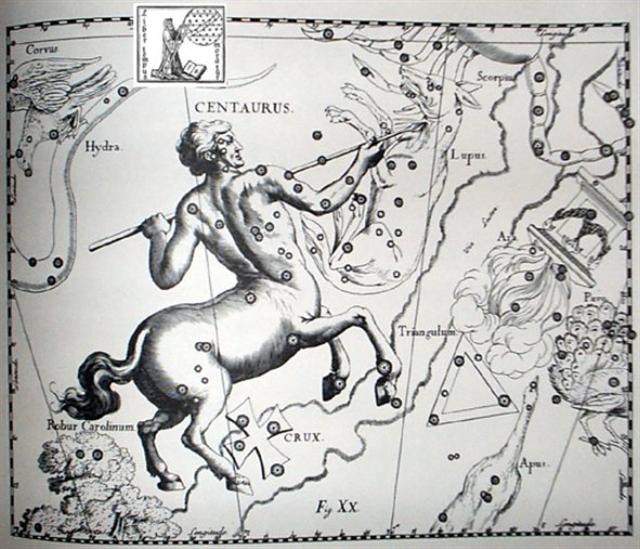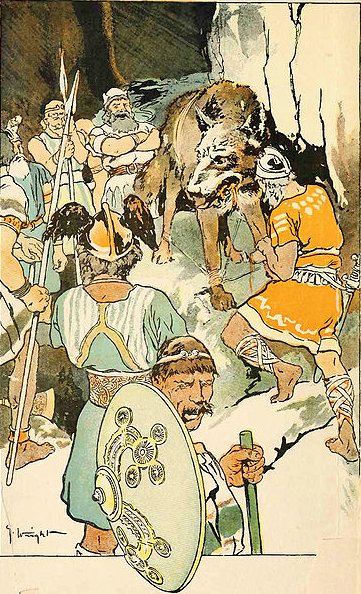Bb7.2
Glyph line Bb7 was evidently intended to begin with
Porrima (the Barker →
Dog → domesticated wolf) at the Full Moon


I.e., when the blinding rays from the Sun were oblitering from
visibility the star of the Wolf (η Andromedae):

... The
king, wearing now a short, stiff archaic mantle, walks
in a grave and stately manner to the sanctuary of the
wolf-god Upwaut, the 'Opener of the Way', where
he anoints the sacred standard and, preceded by this,
marches to the palace chapel, into which he disappears.
A period of time elapses
during which the pharaoh is no longer manifest ...

 |
 |
 |
|
Bb7-1
(665) |
Bb7-2
(245) |
Bb7-3
(273 + 365 + 29) |
|
Ku rere mai ki te manu |
e tagata hakanaganaga ia
ra |
mai tae moe |
|
March 30
(454) |
31 |
April 1
(456 = 365 + 91) |
|
"May 8
(48) |
9 |
10 (50 =
91 - 41) |
|
JAN 25 (390) |
26 |
27 (392 =
91 - 64) |
|
HELIACAL STARS: |
|
ξ
Phoenicis (9.0),
ρ
Tucanae (9.1),
DENEB KAITOS (Tail of the Sea Beast) =
β
Ceti,
η
Phoenicis (9.4), AL NITHĀM (String of
Pearls) =
φ¹
Ceti
(9.6)
*9.4 - *41.4 = *150.0 - 182.0 =
- *32.0 |
ACHIRD (Woman with Luminous Rays) =
η
Cassiopeiae
(10.7) |
Legs-15 (Wolf)
ν
Andromedae (11.0),
φ²
Ceti (11.1),
ρ
Phoenicis (11.2),
η
Andromedae (11.4)
*335.0 = *11.4 - *41.4 |
 |
|
RIGHT
ASCENSION DAYS AT THE FULL MOON: |
|
Sept 28
(271) → 728 = 2 * 364 |
29 (272 =
2 * 136) |
30 (3 *
91 = 273) |
|
"Aug 18 (230 = 271 - 41) |
19 |
20 |
|
JULY 26 (207 = 271 - 64) |
27 |
28 |
|
Al Áwwā'-11 (The
Barker) /
Shur-mahrū-shirū-18
(Front or West Shur)
SOMBRERO GALAXY = M104 Virginis
(191.1),
ρ
Virginis (191.4),
PORRIMA =
γ
Virginis,
γ
Centauri (191.5)
*150.0 = *191.4 - *41.4 |
ι Crucis (192.2), β Muscae (192.5),
MIMOSA = β Crucis
(192.9) |
No star listed (193) |
|
272 (September 29) - 64
(precessional depth down from the Fishes to
the Bull) = 208 (JULY 27) = 181 (SIRIUS) +
27 ('thrice nine hallowed days').
... As has already been
mentioned, the Delphians worshipped Dionysus
once a year as the new-born child,
Liknites, 'the Child in the Harvest
Basket', which was a shovel-shaped basket of
rush and osier used as a harvest basket, a
cradle, a manger, and a winnowing-fan for
tossing the grain up into the air against
the wind, to separate it from the chaff. The
worship of the Divine Child was established
in Minoan Crete, its most famous early home
in Europe. In 1903, on the site of the
temple of Dictaean Zeues - the Zeus who was
yearly born in Rhea's cave at Dicte near
Cnossos, where Pythagoras spent 'thrice nine
hallowed days' of his initiation - was found
a Greek hymn which seems to preserve the
original Minoan formula in which the
gypsum-powdered, sword-dancing Curetes, or
tutors, saluted the Child at his birthday
feast. In it he is hailed as 'the Cronian
one' who comes yearly to Dicte mounted on a
sow and escorted by a spirit-throng, and
begged for peace and plenty as a reward for
their joyful leaps ...
 |
On Easter Island they could in the last day of
September have observed the Chinese Wolf station at
the Full Moon and concluded that this was the day of
the Balance between winter and summer, i.e. for them
the summer half of the year (the season of leaf) was ahead.
... In north Asia the common mode
of reckoning is in half-year, which are not to be
regarded as such but form each one separately the
highest unit of time: our informants term them
'winter year' and 'summer year'. Among the Tunguses
the former comprises 6½ months, the latter 5, but
the year is said to have 13 months; in Kamchatka
each contains six months, the winter year beginning
in November, the summer year in May; the Gilyaks on
the other hand give five months to summer and seven
to winter. The Yeneseisk Ostiaks reckon and name
only the seven winter months, and not the summer
months. This mode of reckoning seems to be a
peculiarity of the far north: the Icelanders
reckoned in misseri, half-years, not in whole
years, and the rune-staves divide the year into a
summer and a winter half, beginning on April 14 and
October 14 respectively. But in Germany too, when it
was desired to denote the whole year, the combined
phrase 'winter and summer' was employed, or else
equivalent concrete expressions such as 'in bareness
and in leaf', 'in straw and in grass' ...

|









